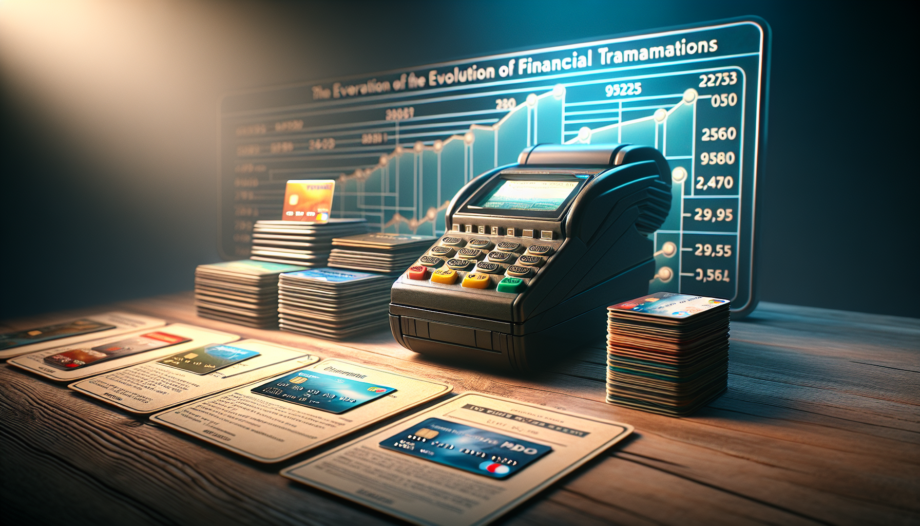Debit cards have become an indispensable part of our daily financial transactions, offering convenience, security, and flexibility. From their humble beginnings in the late 1960s to the high-tech wonders they are today, debit cards have undergone a remarkable evolution. In this article, we’ll explore the fascinating history of debit cards, their key differences from credit cards, and the exciting innovations that are shaping their future.
The Invention of Debit Cards: A Game-Changer in Banking
The concept of debit cards revolutionized the banking industry in the late 1960s, providing a faster and more convenient way for customers to access cash directly from their bank accounts. This groundbreaking invention laid the foundation for the modern financial landscape we know today.
Debit cards have come a long way since their inception, evolving from simple plastic cards to high-tech tools that offer a wide range of functionalities. From tracking expenses to managing budgets and even investing, debit cards have become essential for navigating the complexities of personal finance in the digital age.
The Pioneering Role of Bank of Delaware in 1966
The birth of debit cards can be traced back to 1966 when the Bank of Delaware piloted the first debit card program. While the technology was still in its infancy, this pioneering move set the stage for the widespread adoption of debit cards in the years to come.
The Bank of Delaware’s innovative spirit didn’t stop there. They also worked on developing ATMs, which would later become an integral part of the debit card ecosystem. These early efforts contributed significantly to the technological advancement of the banking industry as a whole.
The Gradual Adoption and Technological Maturation
Despite the Bank of Delaware’s early foray into debit cards, it took some time for the technology to mature and gain widespread acceptance. In 1975, Visa introduced its own debit card offering, paving the way for other major players like Mastercard to enter the market.
As debit cards gained traction, technological advancements continued to shape their evolution. The introduction of bank-specific ATMs in the 1970s marked a significant milestone, making it even more convenient for customers to access their funds. Over the years, debit cards have integrated with digital wallets, enhanced security features, and contactless technology, becoming an indispensable part of modern banking.
The Evolution of Debit Cards: From Plastic to High-Tech
The journey of debit cards from simple plastic rectangles to sophisticated financial tools is a testament to the rapid pace of technological progress. Today’s debit cards are not just a means of spending money but also a powerful tool for tracking, managing, and even learning about personal finances.
Fintech innovations have played a crucial role in enhancing the functionalities of debit cards. From biometric authentication to AI-driven fraud detection, these cutting-edge technologies are shaping the future of banking and redefining the way we interact with our money.
Introduction of Bank-Specific ATMs in the 1970s
The 1970s witnessed a significant milestone in the history of debit cards with the introduction of bank-specific ATMs. These machines allowed customers to withdraw cash using their debit cards, providing a level of convenience that was previously unimaginable.
The proliferation of ATMs marked a turning point in the adoption of debit cards. Suddenly, people could access their money anytime, anywhere, without having to visit a bank branch. This newfound freedom transformed the way people managed their finances and set the stage for further innovations in the years to come.
Integration of Electronic Chips for Enhanced Security
As debit cards gained popularity, concerns about security began to arise. To address these issues, banks started integrating electronic chips into debit cards in the mid-1990s. These chips provided an extra layer of protection against fraud and unauthorized transactions.
The introduction of chip technology was a game-changer for the debit card industry. It not only enhanced security but also paved the way for further advancements like contactless payments and mobile wallet integration. Today, chip-enabled debit cards are the norm, offering peace of mind to millions of users worldwide.
The Rise of Contactless Technology and Digital Wallets
In recent years, contactless technology has taken the debit card industry by storm. With a simple tap or wave, customers can now make payments without ever having to swipe or insert their cards. This convenience has made debit cards more accessible and user-friendly than ever before.
Moreover, the integration of debit cards with digital wallets like Apple Pay and Google Pay has further enhanced their functionality. Users can now store their debit card information securely on their smartphones, enabling them to make payments with just a few taps. These innovations have transformed debit cards into a truly high-tech financial tool.
Debit Cards vs Credit Cards: Key Differences
While debit cards and credit cards may look similar, they operate in fundamentally different ways. Understanding these differences is crucial for making informed financial decisions and choosing the right card for your needs.
| Debit Cards | Credit Cards |
|---|---|
| Draw funds directly from your bank account | Allow you to borrow money from the card issuer |
| No interest charges or debt accumulation | Potential for interest charges and debt if not paid in full |
| Helps control spending and stick to a budget | Can encourage overspending and financial mismanagement |
Drawing Funds Directly from Bank Accounts
One of the most significant differences between debit cards and credit cards is how they access funds. Debit cards are linked directly to your current account, meaning that every transaction you make draws money from your existing balance. This direct connection to your money helps you stay within your means and avoid overspending.
In contrast, credit cards allow you to borrow money from the card issuer, which you then pay back at a later date. While this can be convenient for large purchases or emergencies, it also comes with the risk of accumulating debt and paying interest charges if not managed carefully.
Lower Fees and No Credit Check Requirements
Another key advantage of debit cards is that they often come with lower fees compared to credit cards. Many debit cards have no annual fees, and some even offer cashback rewards on purchases. This makes them a cheaper alternative for those looking to manage their finances more efficiently.
Moreover, getting a debit card usually doesn’t require a credit check, making them accessible to a wider range of people, including those with limited or no credit history. This inclusivity has contributed to the widespread adoption of debit cards, particularly among younger generations.
The Future of Debit Cards: Innovations on the Horizon
As technology continues to advance at a rapid pace, the future of debit cards looks brighter than ever. From integration with cryptocurrencies to biometric authentication and AI-driven fraud detection, the next generation of debit cards promises to be even more secure, convenient, and financially empowering.
Fintech startups are at the forefront of these innovations, challenging traditional banks to keep up with the evolving needs and expectations of consumers. As we move towards a cashless society, debit cards are poised to play an even greater role in shaping the future of finance.
Integration with Cryptocurrencies and Digital Assets
One of the most exciting developments in the world of debit cards is their potential integration with cryptocurrencies and digital assets. As Bitcoin and other cryptocurrencies gain mainstream acceptance, the demand for crypto debit cards is on the rise.
These innovative cards allow users to spend their cryptocurrencies just like traditional money, bridging the gap between the digital and physical worlds. With major players like Visa and Mastercard already exploring this space, it’s only a matter of time before crypto debit cards become a common sight in our wallets.
Biometric Authentication and AI-Driven Fraud Detection
As concerns about security and privacy continue to grow, debit cards are evolving to meet these challenges head-on. Biometric authentication, such as fingerprint or facial recognition, is becoming increasingly common, providing an extra layer of protection against unauthorized access.
Moreover, advances in artificial intelligence and machine learning are enabling AI-driven fraud detection systems that can identify and prevent suspicious transactions in real-time. These cutting-edge technologies are making debit cards safer and more secure than ever before, giving users peace of mind and confidence in their financial transactions.
From their humble beginnings as simple plastic cards to the high-tech wonders they are today, debit cards have undergone a remarkable transformation. As we look to the future, it’s clear that the evolution of debit cards is far from over. With exciting innovations on the horizon, from cryptocurrency integration to biometric security, debit cards are poised to remain an essential part of our financial lives for years to come.
See also:

